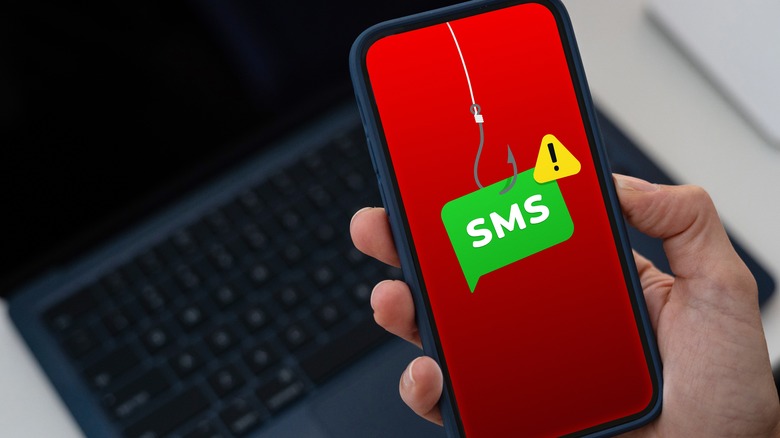Did You Get A Suspicious Text About An Amazon Return? Here's What's Happening
A new scam targeting Amazon users is making the rounds in the form of suspicious text messages, but those who know what to look out for can avoid being taken advantage of. The texts in question were spotted by scam prevention service Guardio, which passed the information along to Forbes. According to the firm, these particular text attacks have spiked by 5,000% in recent weeks.
These messages claim that a recent Amazon purchase is eligible for a refund without needing to return the product due to a seller error. The texts also include a link to a fake Amazon website containing forms that request personal information. Getting people to enter their personal information on that page is presumably the goal of the scheme.
The texts appear to have risen in frequency following Amazon Prime Day on July 8, since a higher volume of customers than usual made recent purchases during the sale event. If you got one of these texts, you may be concerned that your Amazon account is compromised. However, if you did not click on the link, you're almost certainly safe. Moreover, the texts don't seem to be targeting specific users. Rather, the scammers are blasting the texts out to random phone numbers and banking on the statistical likelihood that recipients will be among the roughly 75% of American shoppers with an Amazon Prime subscription. Whether or not you were compromised, it's a good idea to change your Amazon password regularly (making sure to never use the same password for multiple accounts), set up two-factor authentication, and use passkeys.
How to avoid getting scammed by fake Amazon texts
This new wave of fake Amazon scam texts bears the hallmarks of a phishing scam, and learning how to identify such scams is the best way to avoid falling victim to one. To begin with, companies like Amazon never send important information in the form of a text message. Never take action based on a suspicious text. Instead, Amazon recommends checking its website or the official Amazon app on your phone. Go to your Account page and look in the Your Orders and Your Messages sections to see whether anything requires your attention.
Another telltale sign of a scam is the link included in these texts. In images provided by Guardio, the dangerous link appears to have been run through a link shortener to disguise the true URL. Never click on misspelled links (for example, "anazon.co") or unknown links containing common link shortener domains such as "bit.ly" or "tinyurl.com." Additionally, beware of language that appears intended to scare you into action. Although they do not appear in this particular scam, phrases like "act quickly" or claims that your account is compromised are often used by scammers hoping to bypass your critical thinking skills. You should also look out for obvious spelling errors or poor grammar, which are telltale signs of fake messages. These mistakes are becoming less common thanks to generative AI, but they're still worth checking for.
If you receive a likely scam message, you should delete it immediately. Android users can block and report spam inside the Google Messages app. You can also report scams directly to Amazon.

